Phono stages aren’t the most glamorous item in a hi-fi chain. But if you want to hear your cherished record player at its best, a good one is essential. We’ve heard few better than Luxman’s EQ-500, regardless of price.
Usually phono stages are nondescript little boxes, but not this one. Luxman has built the EQ-500 into full-sized casework and packed it full of toggle switches, dials and signal-level meters.
It’s hard to think of a more feature-packed alternative, and the majority of these features are very useful too.
Features
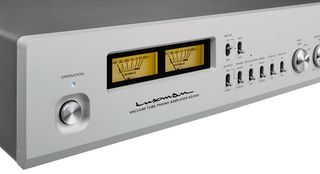
There are switches to govern whether the unit sends out the signal balanced or single-ended, and its phase.
Further toggles govern impedance (for moving magnet cartridges only), high- and low-pass filtering, type (moving magnet, high- and low-output moving coil), stereo/mono switching and inputs.
This phono stage has an usual two-stage gain adjustment for each of the three cartridge type settings, allowing up to 4db extra to the basic gain steps of 36dB (MM), 55dB (MC high) and 63dB (MC low).
MORE: How to set up your turntable

Confusingly, the control is marked with three values (36dB, 38dB and 40dB) which are only the correct numbers when using the moving magnet setting. Of course, when you use either of the moving coil options the base setting changes accordingly.
Why the fuss of two-stage adjustment? It allows the user to fine-tune the balance of gain between the phono stage and preamp circuitry, and helps give the volume control a more useable range of adjustment.
There’s another control marked “Articulator”. Switch it on for around 30 seconds and it demagnetises the cartridge. The signal mutes while the control is activated. In our set-up we didn’t notice much change in the sound, but it’s worth a try.
Build
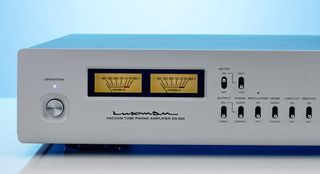
Take a look inside the EQ-500 and you’ll find step-up transformers for the moving coil part of the circuit and six small valves (4 x ECC83 and 2 x ECC82) used for amplification duties.
An additional valve, an EZ81, is used in the generously specified power supply section. There’s extensive internal shielding to keep noise levels and distortion low.
Build quality is as good as we expect from Luxman’s higher-end products. The casework feels solid and is finished to a high standard, while the front panels switches all work with precision. This is an expensive unit and feels it.
MORE: Best phono preamps 2017

The EQ-500 is hefty for a phono stage, weighing in at just under 13kg - around the same as a decent integrated amplifier.
At 44cm it’s a touch wider than the standard full-size width too, something to keep in mind when choosing a place for it to sit.
A phono stage costing five grand positively demands a top class record player as well as suitably talented amplification and speakers. We use our reference Clearaudio Innovation Wood package, including a Clearaudio Stradivari V2 moving coil cartridge and a Goldring 1042 cartridge for MM duties, plus Gamut D3i/D200i amplification and ATC SCM 50 speakers.
Sound
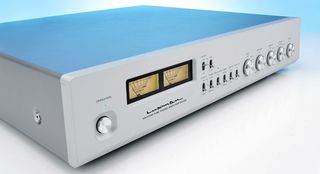
Don’t be tempted to judge the Luxman too quickly. On initial powering it sounds thick and a little timid.
Even at this stage there are signs of exceptional detail resolution and class leading refinement, but the generally sludgy attitude doesn’t impress.
Allow that valve-driven circuitry to stabilise properly – don’t worry, the EQ-500’s casework hardly gets warm – and the presentation gains transparency, life and openness.
The first thing that strikes us is just how quiet it is. Background hiss is at a very low level, which is testament to the Luxman’s carefully considered electrical internals and extensive shielding.
MORE: 12 of the best vinyl test records
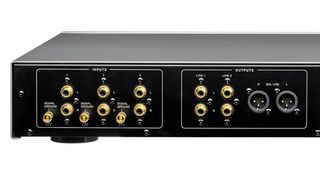
Once firing on all cylinders this is wonderful-sounding unit. Being valve-driven, you’d expect the Luxman to sound smooth and refined - and it is, but it only takes a few minutes of Nirvana’s Nevermind to realise there’s plenty in the way of punch and power too.
Smells Like Teen Spirit tears along with all its passion and aggression intact. We’re impressed by the EQ-500’s surefooted rhythmic drive and its ability to turn things up to eleven when required.
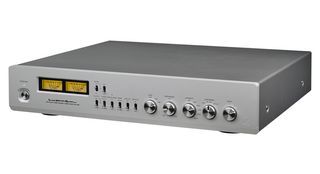
Kurt Cobain’s powerful vocals come through with clarity and conviction, but this phono stage stays composed throughout.
The various instrumental strands are organised with skill, the Luxman never forgetting the hard-charging attitude of the track comes before any hi-fi considerations.
Moving on to Orff’s Carmina Burana allows the Luxman to show off its fine stereo imaging. It describes an expansive soundstage, populating it with nicely layered and convincingly sized instruments and voices.
The presentation is stable too, so sounds stay locked in their position no matter how complex the music gets. This composition is one of the most challenging around, yet it brims with ferocious dynamics and complex interplay.
Verdict
The EQ-500 doesn’t shirk its duties, delivering crescendos with poise while digging up instrumental textures and vocal nuances with ease.
This phono stage uncovers class-leading levels of detail, but always presents them in an unforced and natural manner.
Tonally it’s rounded and refined but, as Nirvana and Orff prove, things are never taken too far. The sweet highs are balanced by rich and textured lows – a really nice balance to have when the midrange is so fluid and revealing.
If you have a system that’s worthy of such a premium phono stage, you should certainly consider the Luxman seriously. It is beautifully made and a pleasure to use. We want one. Badly.

